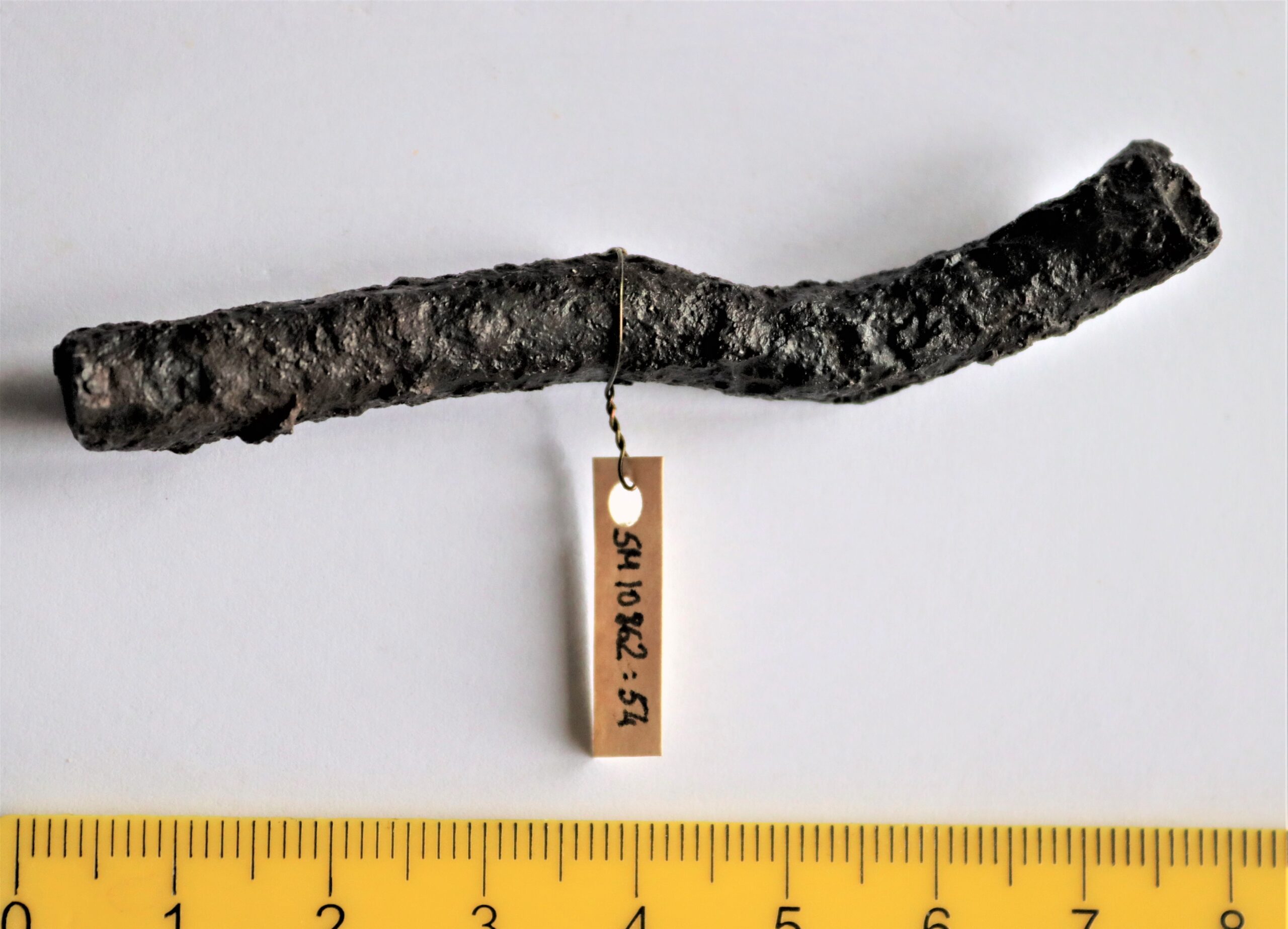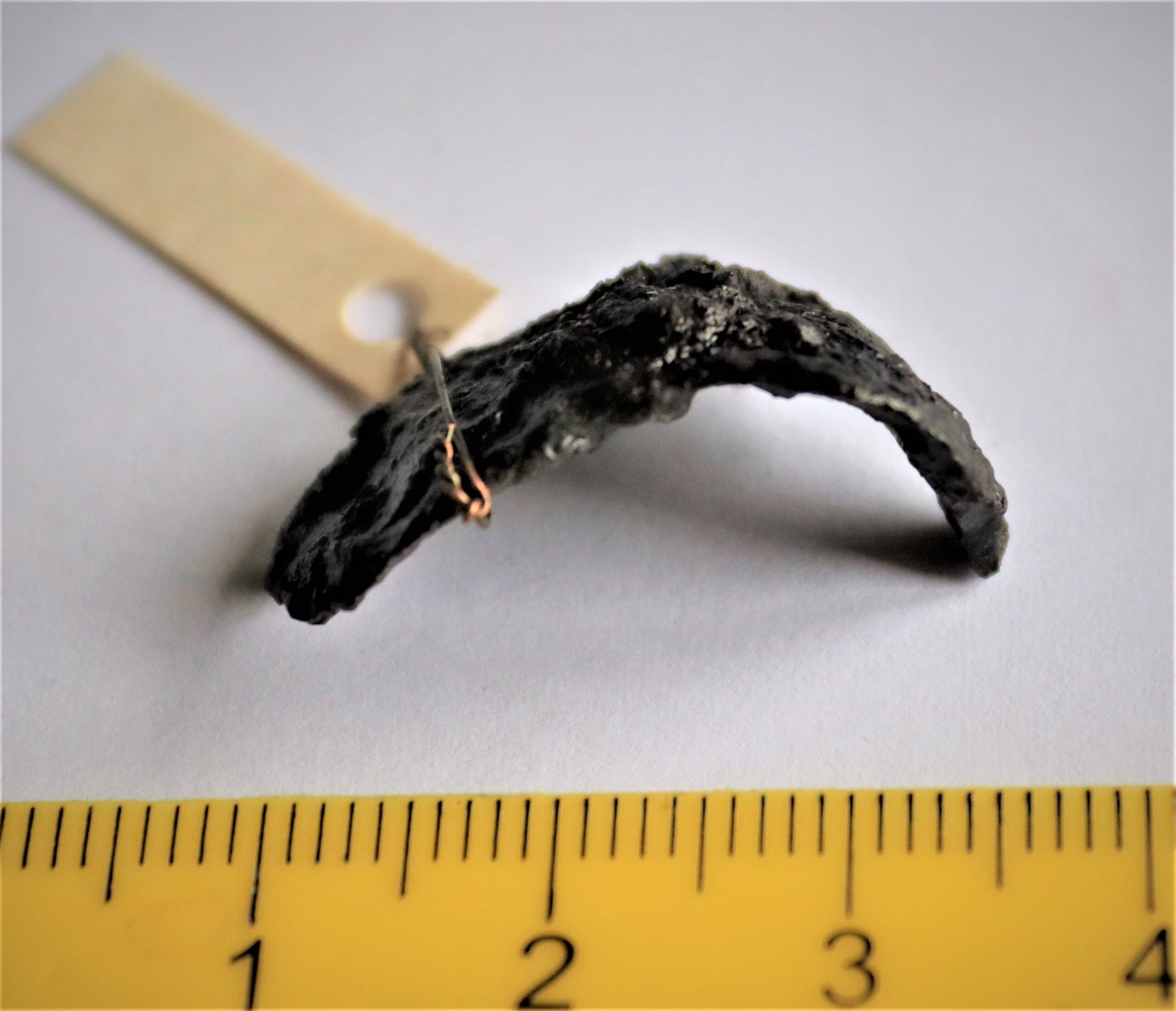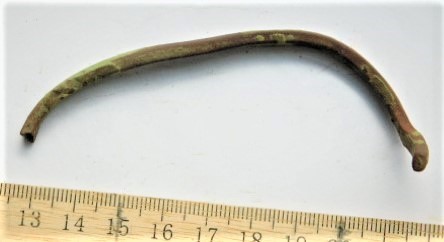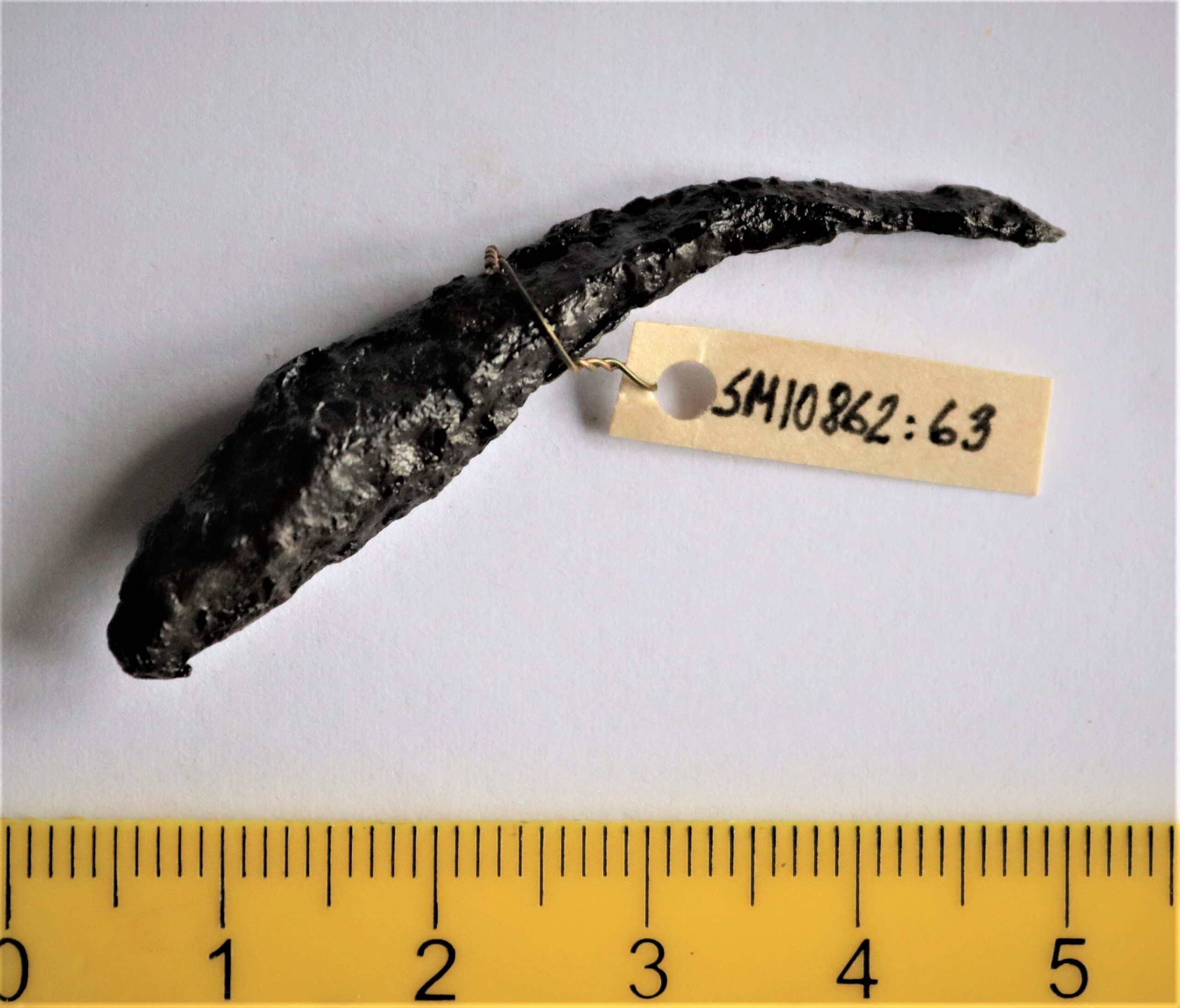Database
Our database is free to use for all history and archaeology enthusiasts. If you use our database, please do not forget to cite correctly:
Mägi, Marika; Palm, Piia Sandra. Archaeological Artefacts of Saaremaa. Foundation Osiliana / Tallinn University. Accessed: date.
The Osiliana Archaeological Database presents artefacts from Saaremaa and the surrounding small islands.
The database contains mainly Iron Age and Medieval finds that can be classified.
Undated metal or other pieces were generally excluded from the database.
Ceramics are represented by isolated examples.
The database is a work in progress and is constantly being updated.
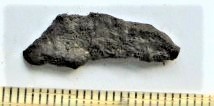
Ure
Piece of iron, small and flat. Perhaps from a knife?
Ure
Iron rod, thick and bit curvy. The cross-section is circular, but one end of the rod is abruptly flattening.

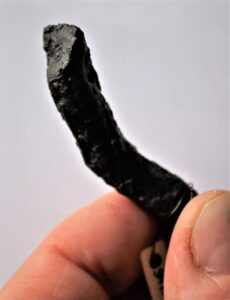
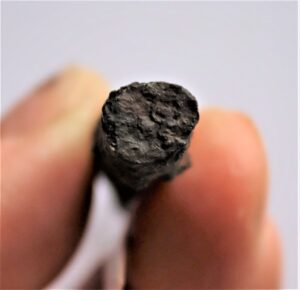

Ure
Shepherd-crook-headed pin fragment, iron. Shaft and part of the head. The cross-section is indeterminate.

Ure
Half head of a shepherd-crook-headed pin (?), iron. Flat cross-section, the diameter of the head is 3.2 cm. See also SM 10862: 55, 60.
Ure
Artefact fragment, iron. Flat rod with a returnable clamp made of wide iron sheet.
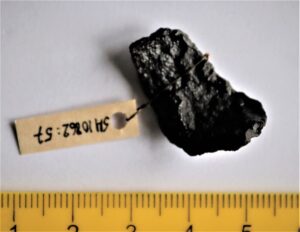
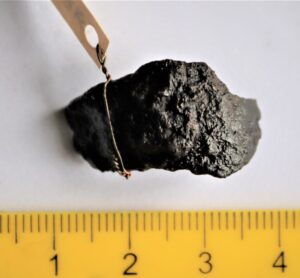
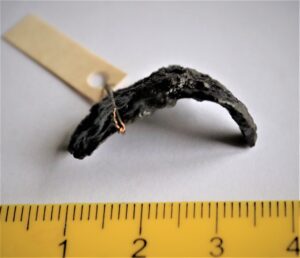
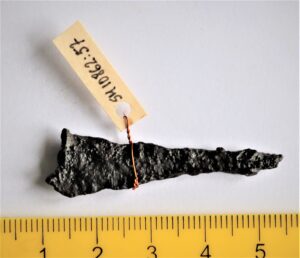
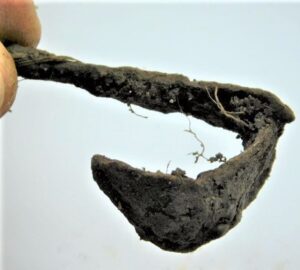
Artefact fragment, iron. Flat rod with a returnable clamp made of wide iron sheet.
Ure
Fragment of bracelet (?), bronze. The cross-section is rectangular.
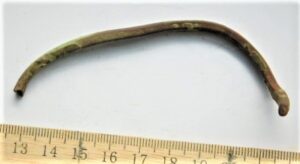


Fragment of bracelet (?), bronze. The cross-section is rectangular.
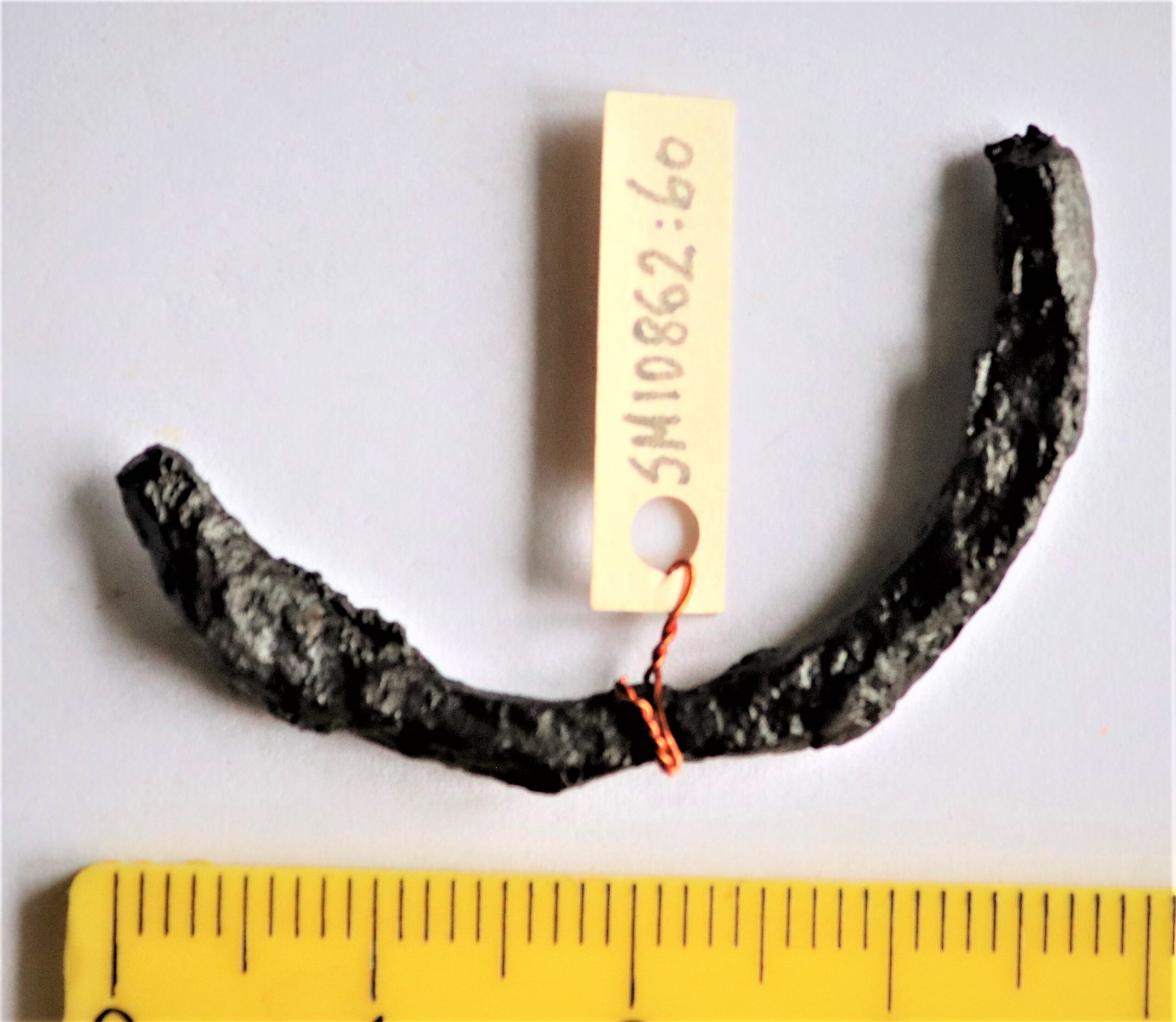
Ure
Half head of a shepherd-crook-headed pin (?), iron. Flat cross-section, the diameter of the head is 3,2 cm. Most likely the other half of SM10862:56.
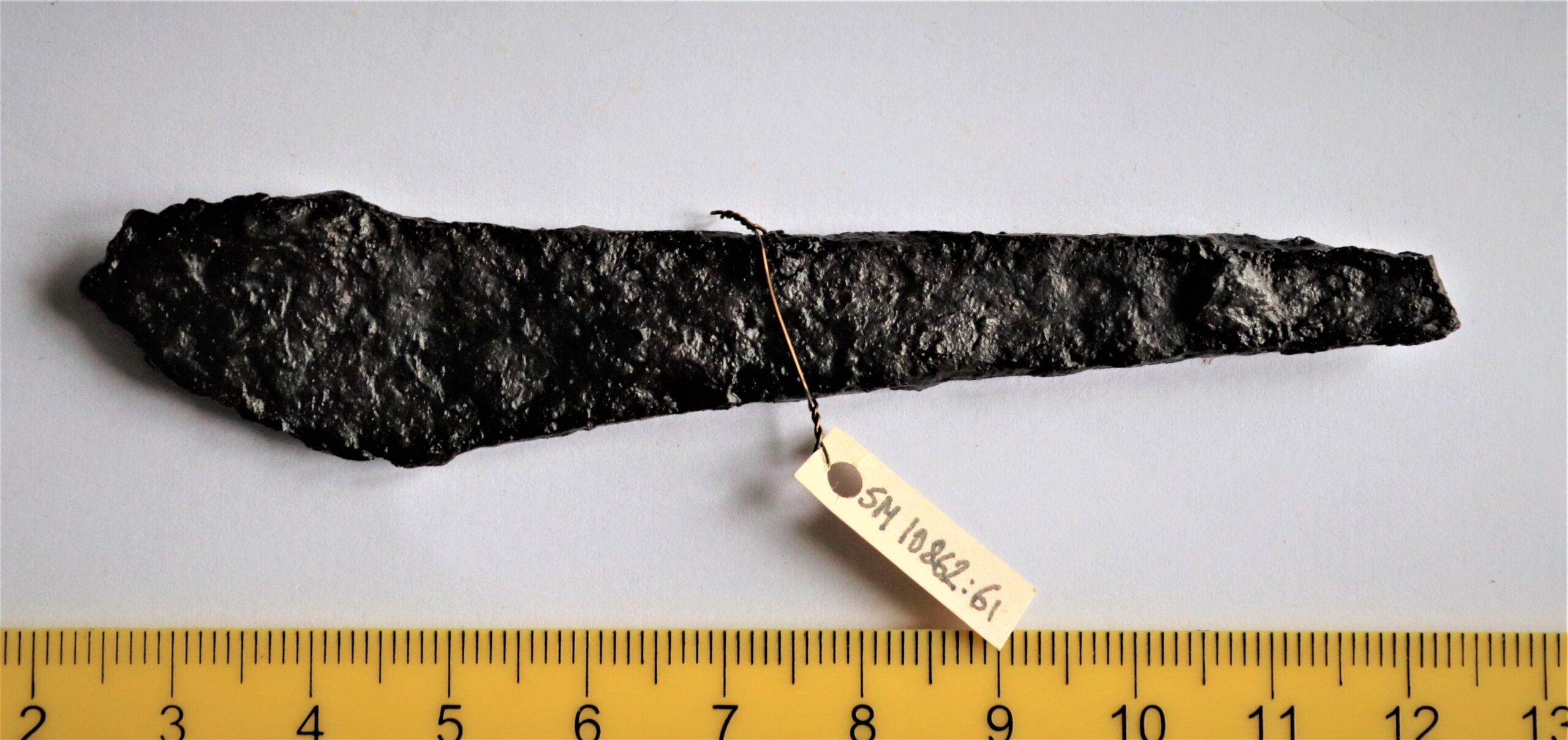
Ure
Knife fragment, iron. Tang and part of the blade that is on the side of the tang. The cross-section of the tang is flat quadrilateral.
Ure
Arrowhead (?), iron. The tip of the blade is flat, but the neck has a square cross-section (side of the square is 6-7 mm) and the tip appears to be pointed.
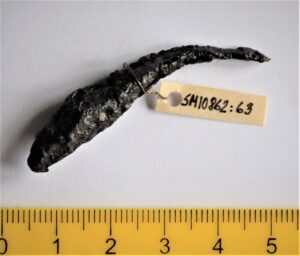

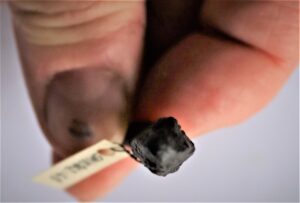
Arrowhead (?), iron. The tip of the blade is flat, but the neck has a square cross-section (side of the square is 6-7 mm) and the tip appears to be pointed.
The negative value refers to time Before Christ.

